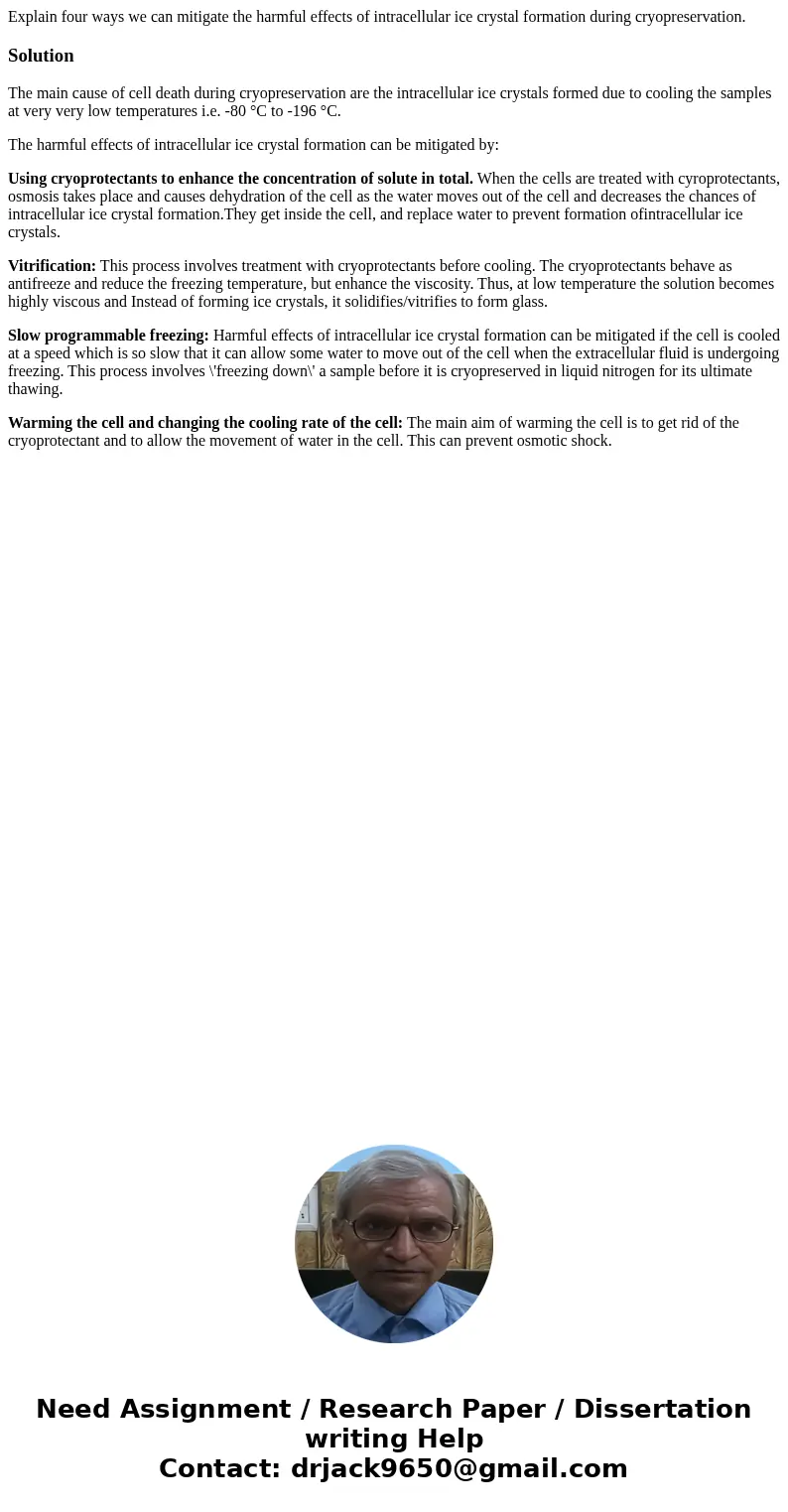Explain four ways we can mitigate the harmful effects of int
Explain four ways we can mitigate the harmful effects of intracellular ice crystal formation during cryopreservation.
Solution
The main cause of cell death during cryopreservation are the intracellular ice crystals formed due to cooling the samples at very very low temperatures i.e. -80 °C to -196 °C.
The harmful effects of intracellular ice crystal formation can be mitigated by:
Using cryoprotectants to enhance the concentration of solute in total. When the cells are treated with cyroprotectants, osmosis takes place and causes dehydration of the cell as the water moves out of the cell and decreases the chances of intracellular ice crystal formation.They get inside the cell, and replace water to prevent formation ofintracellular ice crystals.
Vitrification: This process involves treatment with cryoprotectants before cooling. The cryoprotectants behave as antifreeze and reduce the freezing temperature, but enhance the viscosity. Thus, at low temperature the solution becomes highly viscous and Instead of forming ice crystals, it solidifies/vitrifies to form glass.
Slow programmable freezing: Harmful effects of intracellular ice crystal formation can be mitigated if the cell is cooled at a speed which is so slow that it can allow some water to move out of the cell when the extracellular fluid is undergoing freezing. This process involves \'freezing down\' a sample before it is cryopreserved in liquid nitrogen for its ultimate thawing.
Warming the cell and changing the cooling rate of the cell: The main aim of warming the cell is to get rid of the cryoprotectant and to allow the movement of water in the cell. This can prevent osmotic shock.

 Homework Sourse
Homework Sourse